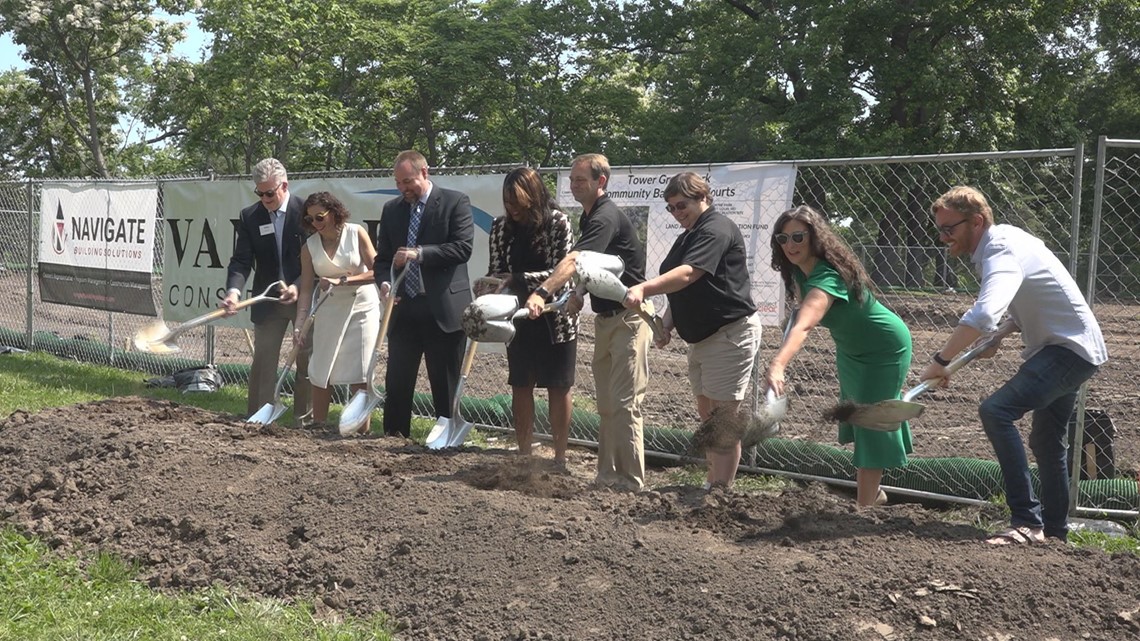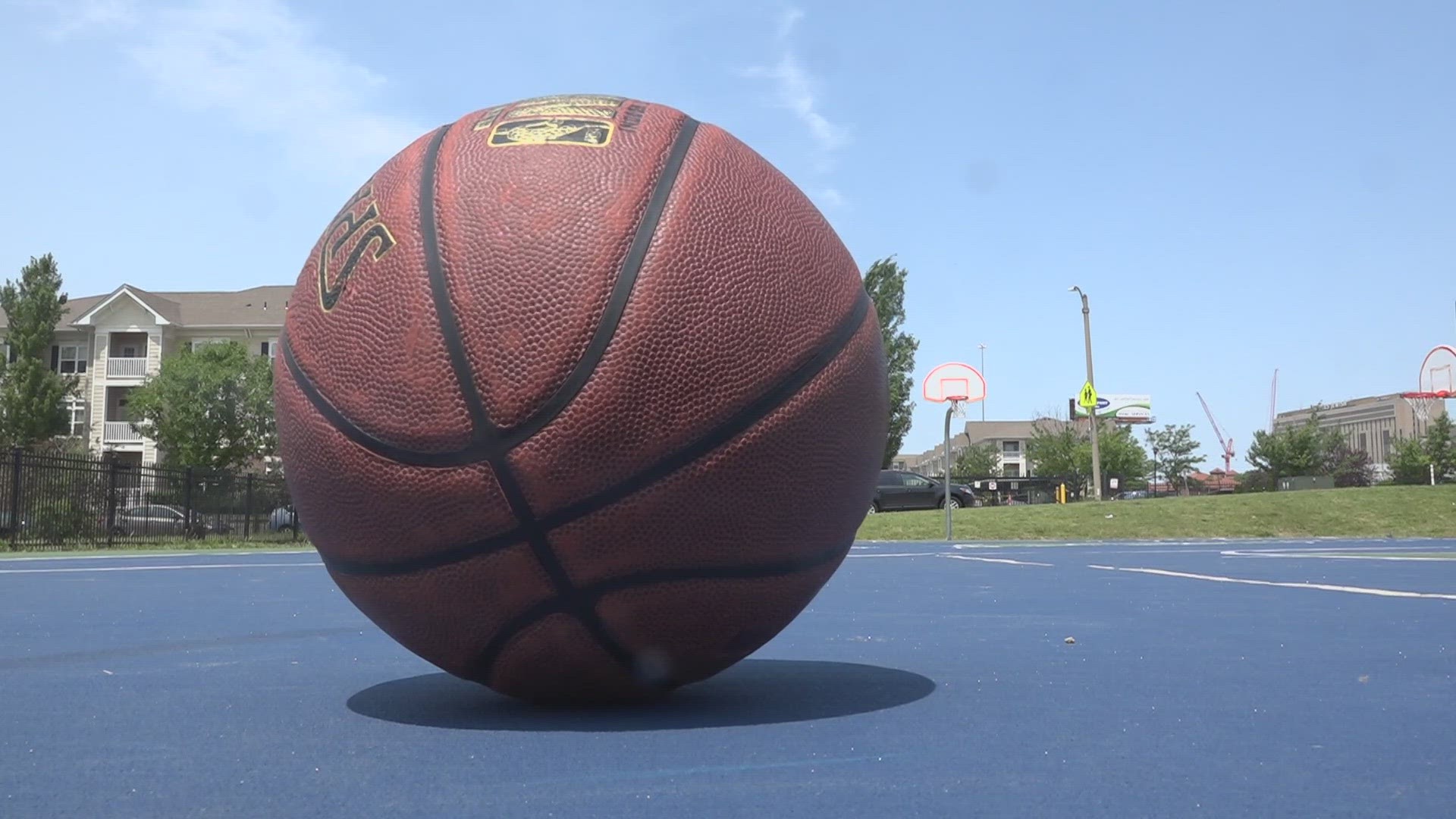ST. LOUIS — Shovels dug into the dirt at Tower Grove Park Tuesday morning near Arsenal Street and Bent Avenue.
St. Louis leaders broke ground while trying to break a stigma.
Two new basketball courts are coming in late fall to the 289-acre park, and crews were already hard at work following the ceremony.
The two full-size courts will have post-tension concrete for durability and four nets total.


Bill Reininger, the Executive Director of Tower Grove Park, said, "We are nestling it between a national historic landmark and a Victorian Park, so it has to complement it. Instead of aluminum benches, it’ll have stone seating walls."
The basketball courts have been in the works since 2017.


That's when Tower Grove Park officials were creating a Master Plan for its 150th anniversary in 2022.
Reininger said that in the nine-month public input, there were two open houses, each one having 200 people. Besides that, there were 1,300 online surveys.
The basketball courts were the top three requests.


Tower Grove Park first had courts in 1902. Then, those hoops were removed more than 30 years ago due to deteriorating conditions.
The removal of these courts is a trend Board of Aldermen President Megan Green has seen over the years.
"Basketball courts used to be a staple and removed over concerns about crime but we know there were racial undertones to that," Green said.
The lack of courts caught the attention of basketball enthusiast Adam Brok.
The St. Louis University graduate focused his 2019 capstone on the removal of basketball courts from public parks.
Brok noticed that out of the 108 parks, less than a third had basketball courts, and they were concentrated north of Delmar, with only a handful south of Delmar.
"A lot of it was based on the kind of behavior related to basketball players. It seemed to focus more on the people playing basketball than basketball courts themselves. It seemed on my research that reasons for removing basketball courts were based on perceiving behaviors of the people playing it and the people playing it are predominately people of color," Brok said.
Brok looked at one example with the removal of the courts in Lafayette Park in 1997.
He said there were concerns of language, trash and public urination.
"The rationale seemed to be if we remove the basketball courts, then people playing basketball won’t be here and we can resolve the issues," Brok said.
But Brok also learned how community input can help.
"The community can really support and take advantage of the court. For example like PAL," he said, referring to the Police Activities League. "There are a lot of ways that you can use the space to do programming, which actually enhances the community."
Green agreed, saying, "I think the more we can provide quality recreational activities for youth in our community, it's going to reduce crime and they can have productive outlets."
The basketball courts are expected to be done by late fall. A ribbon cutting could happen in late October or early November.

